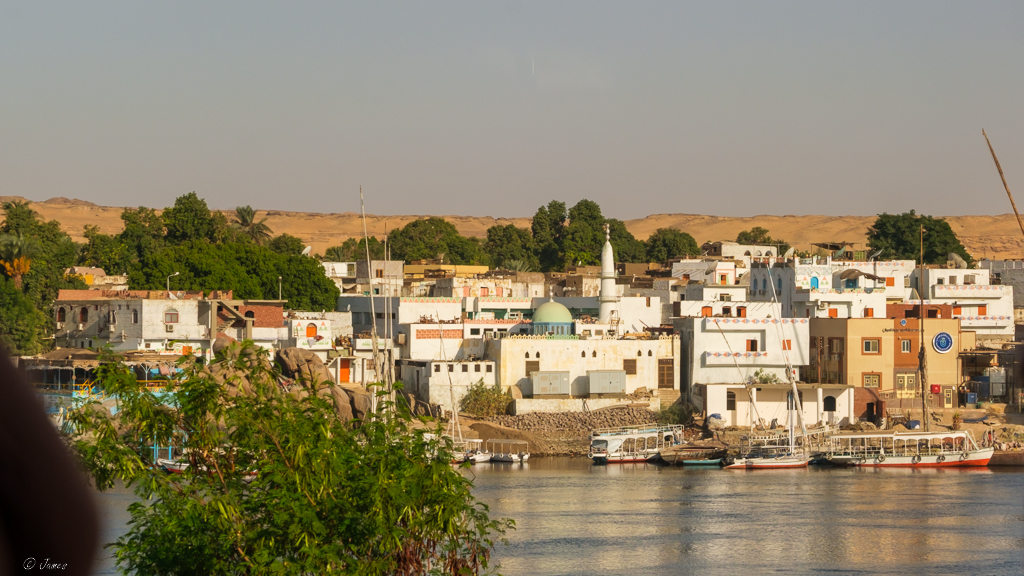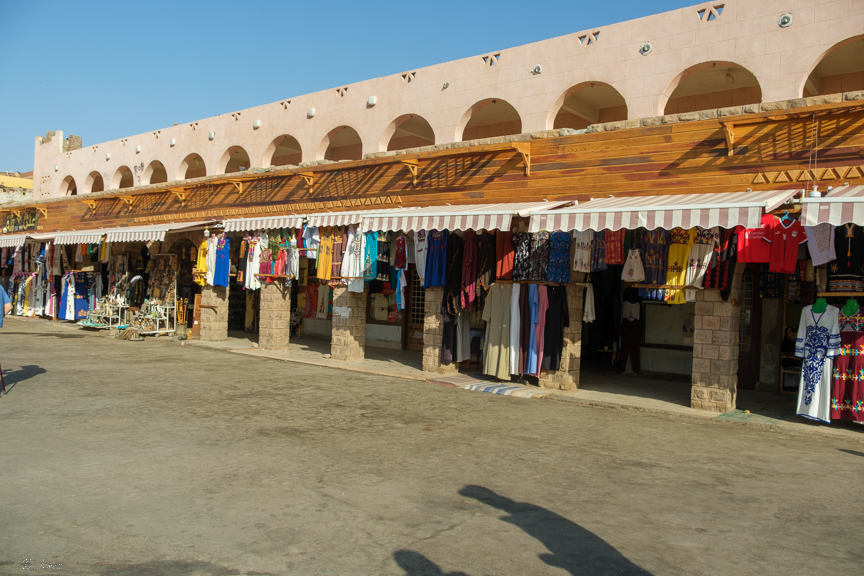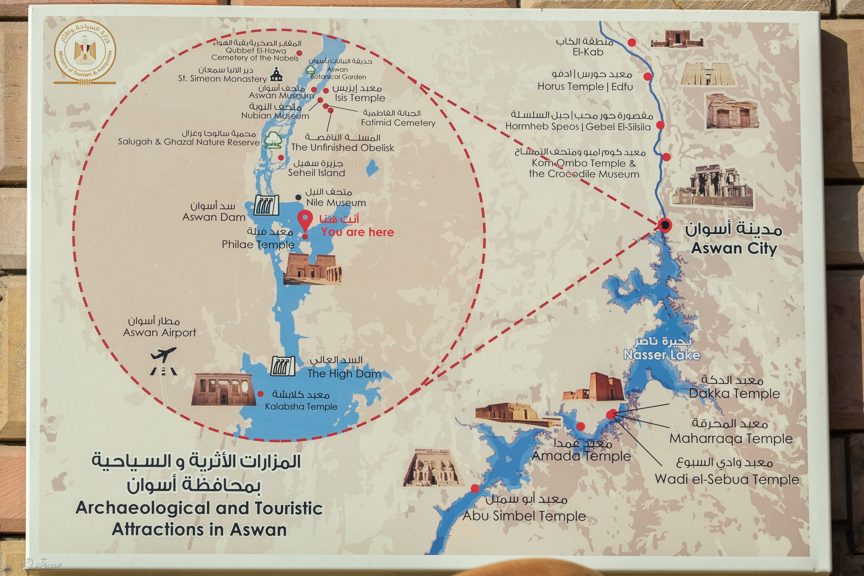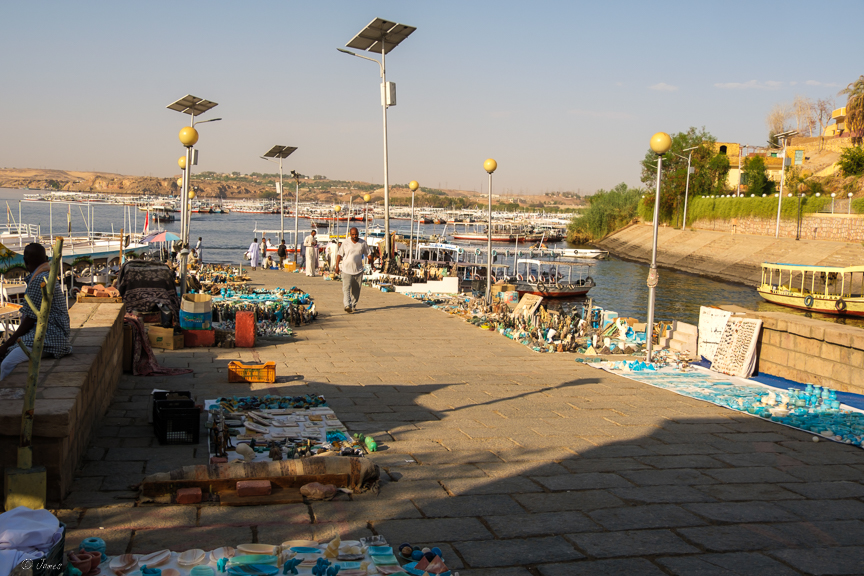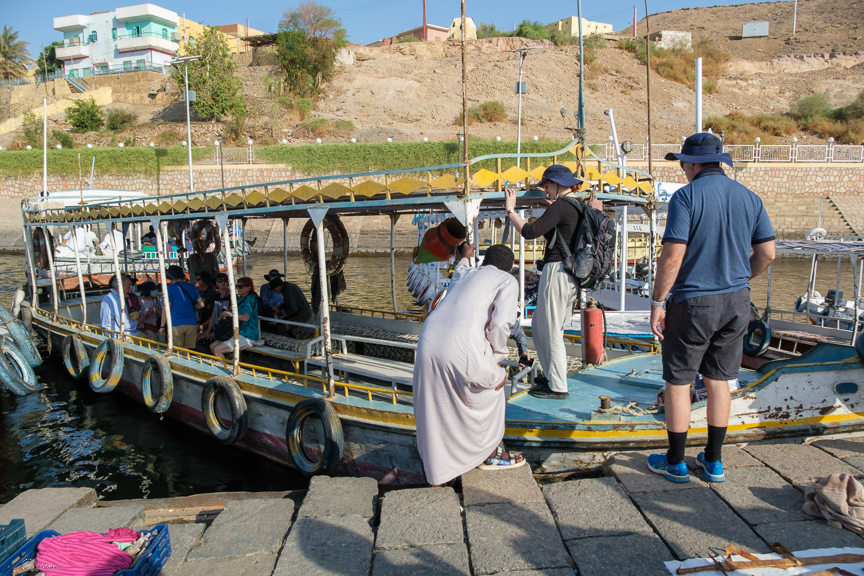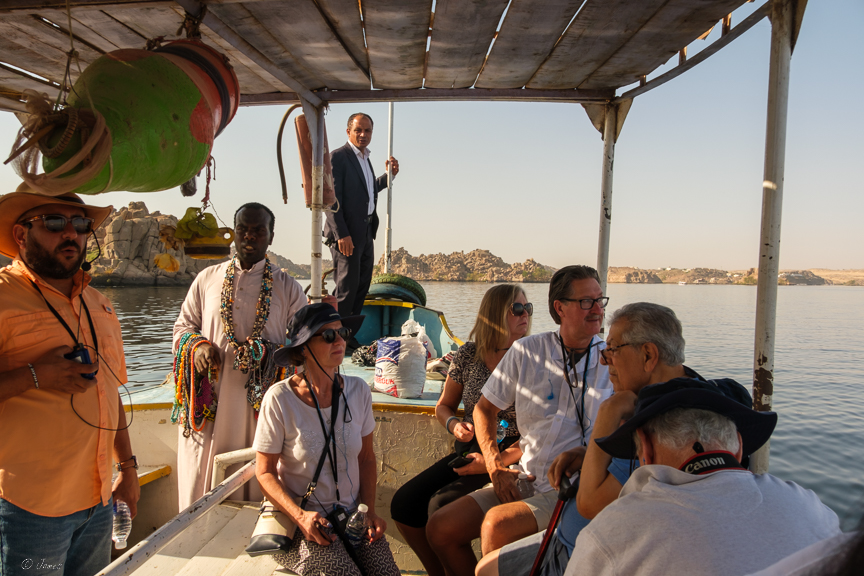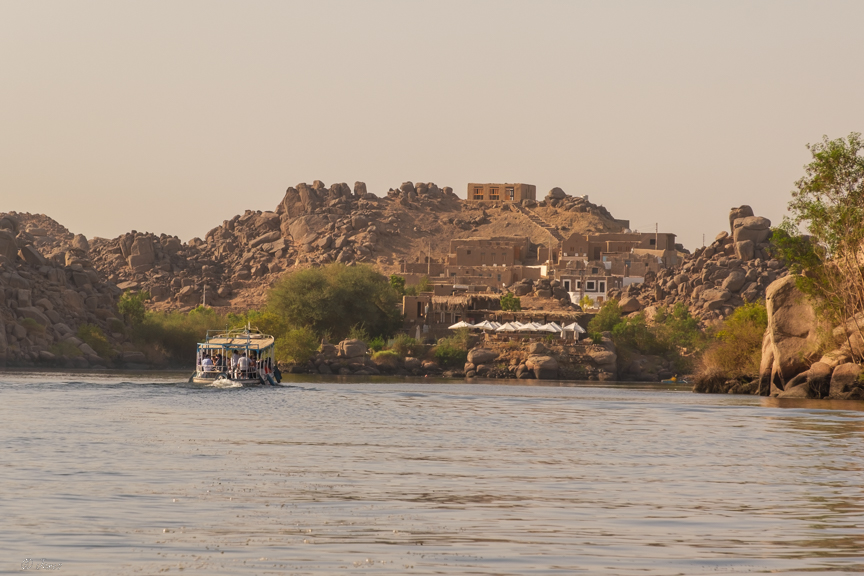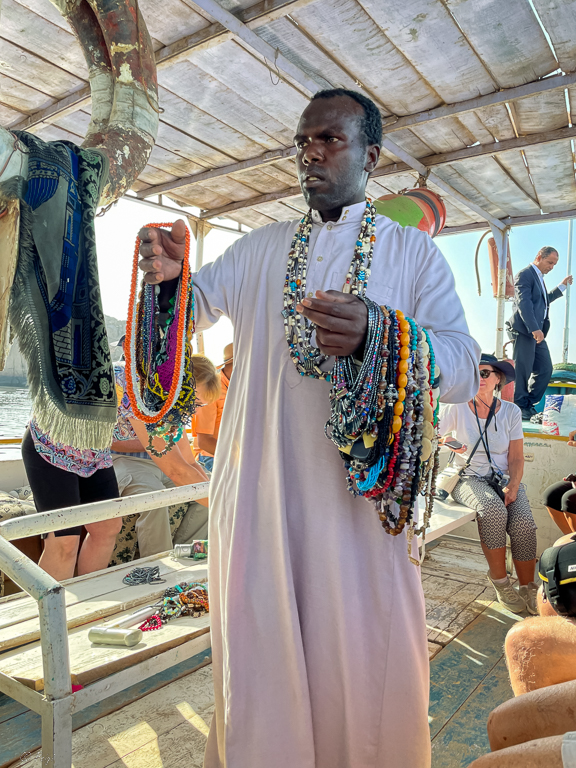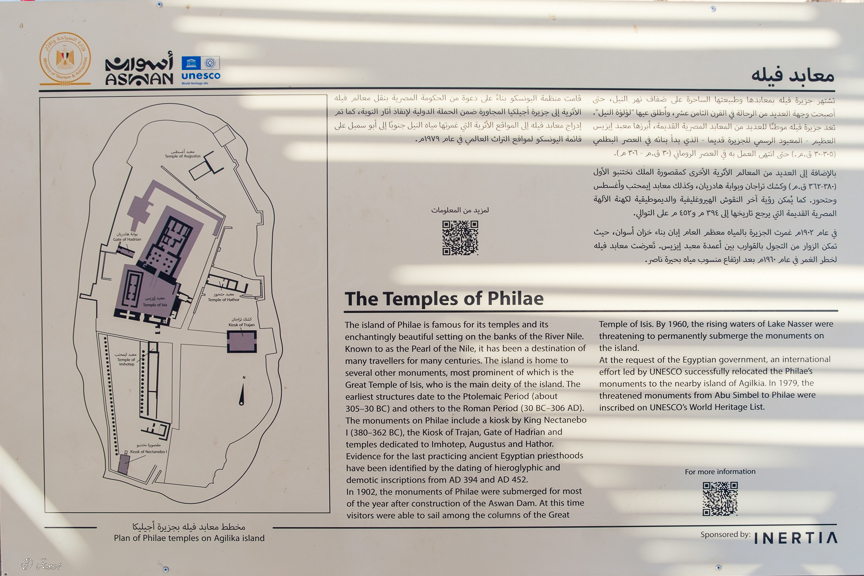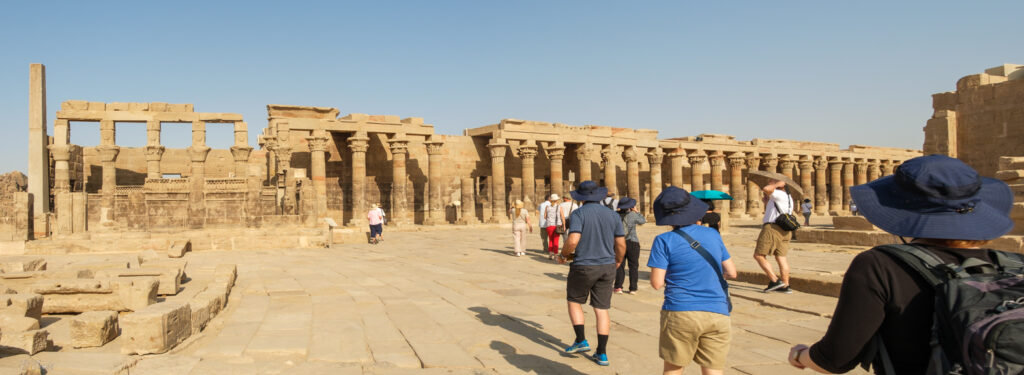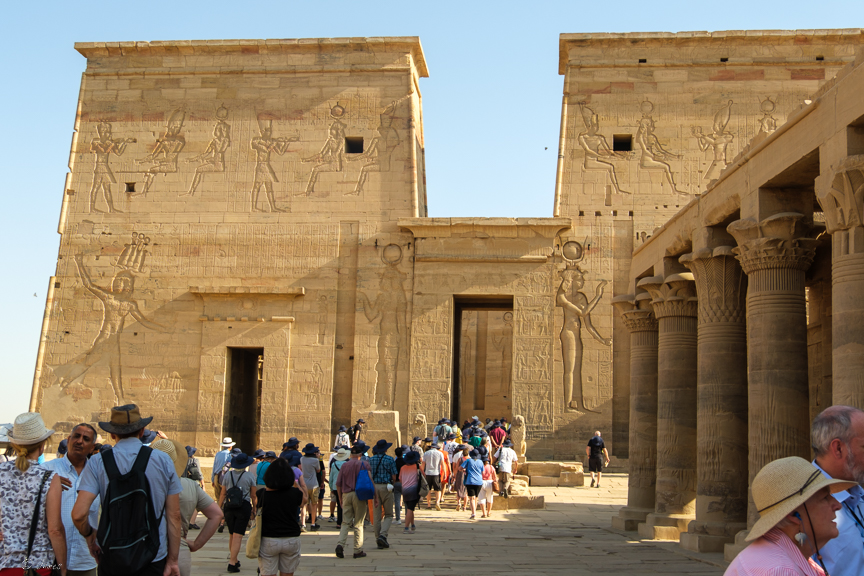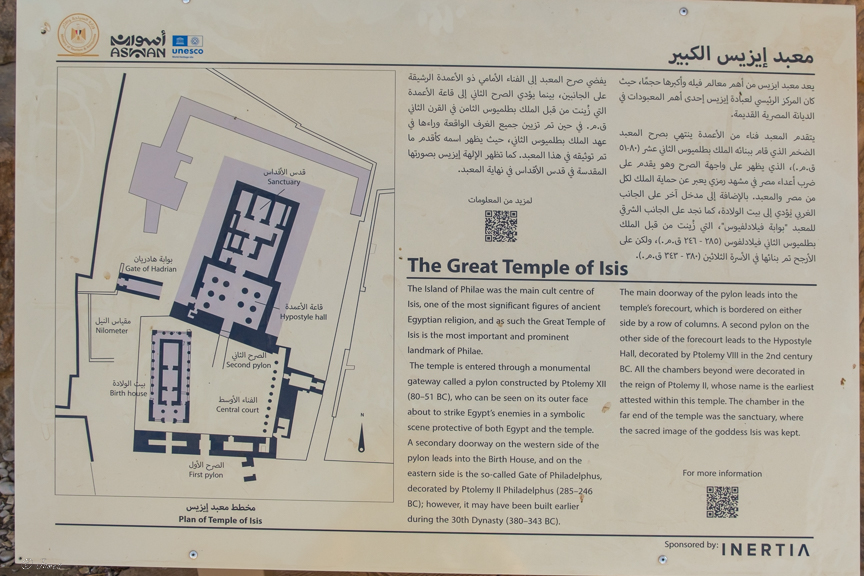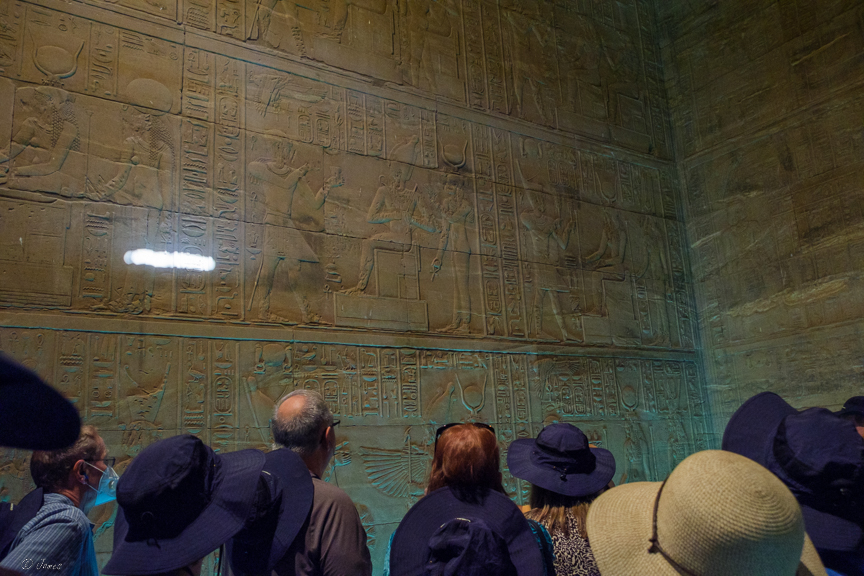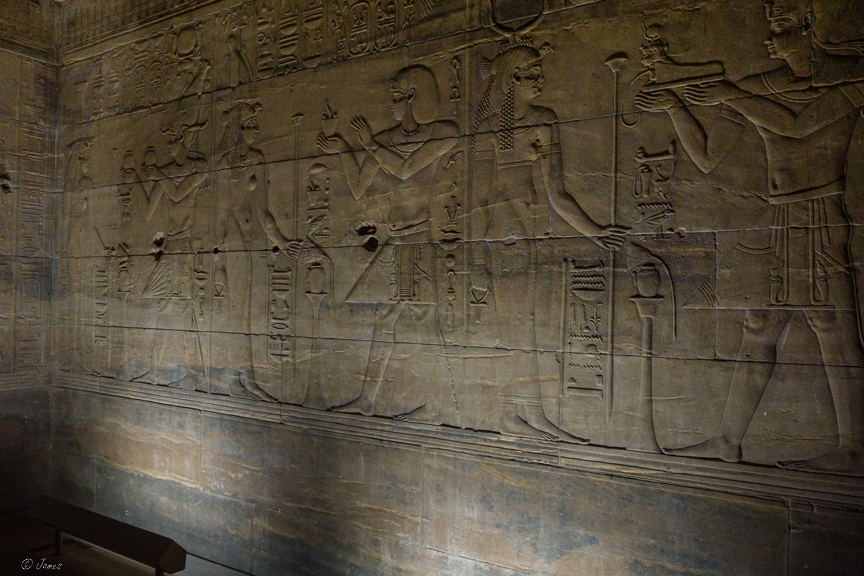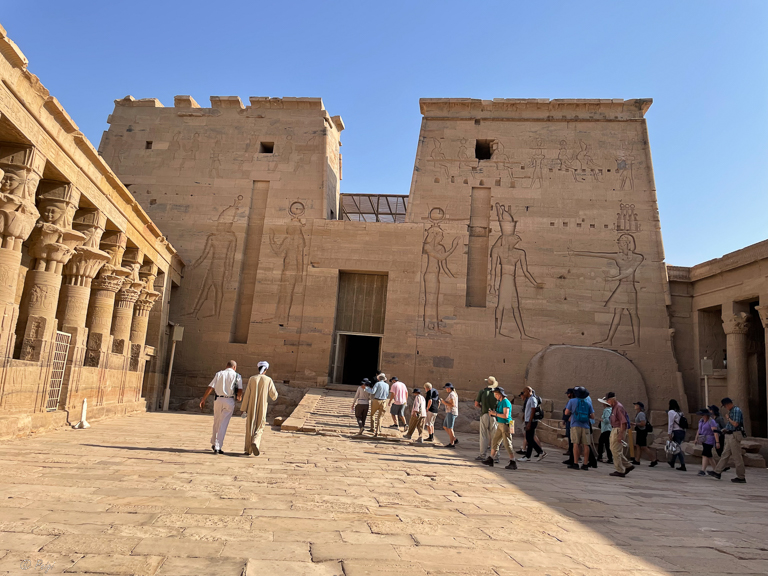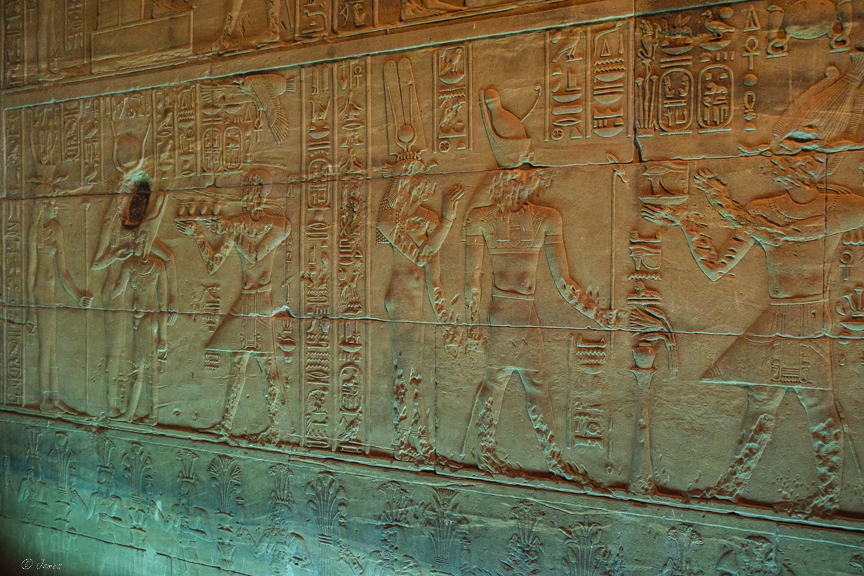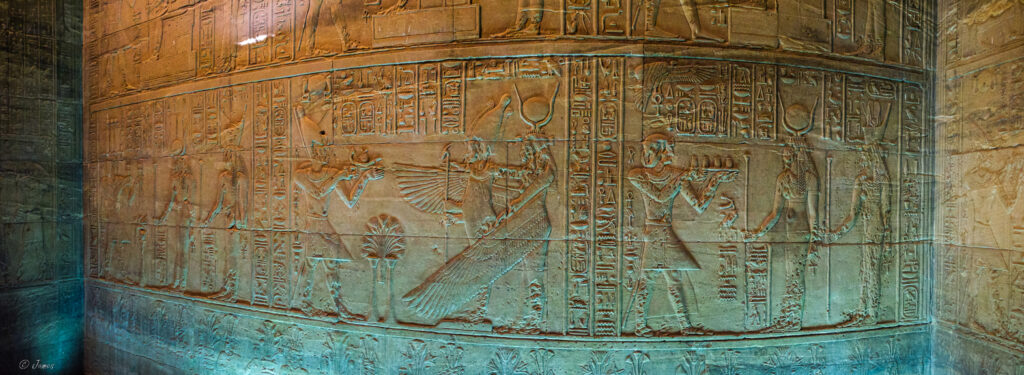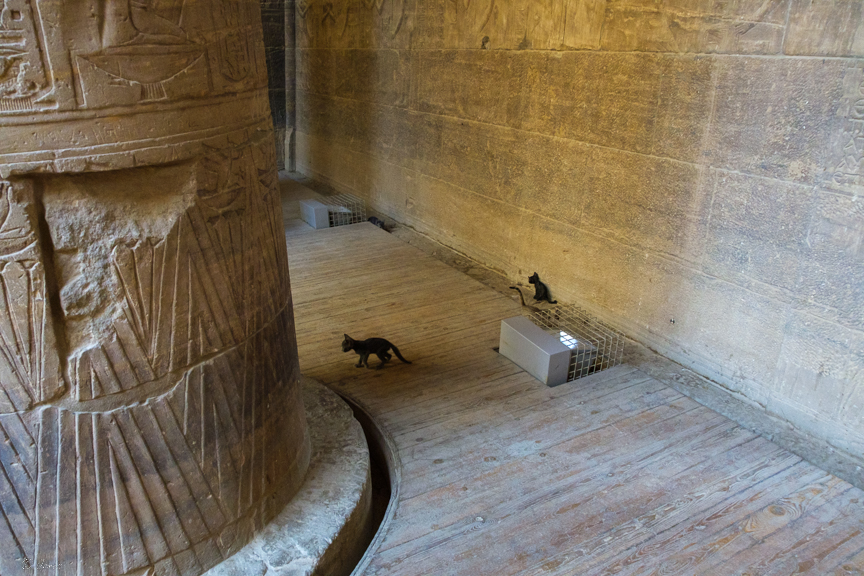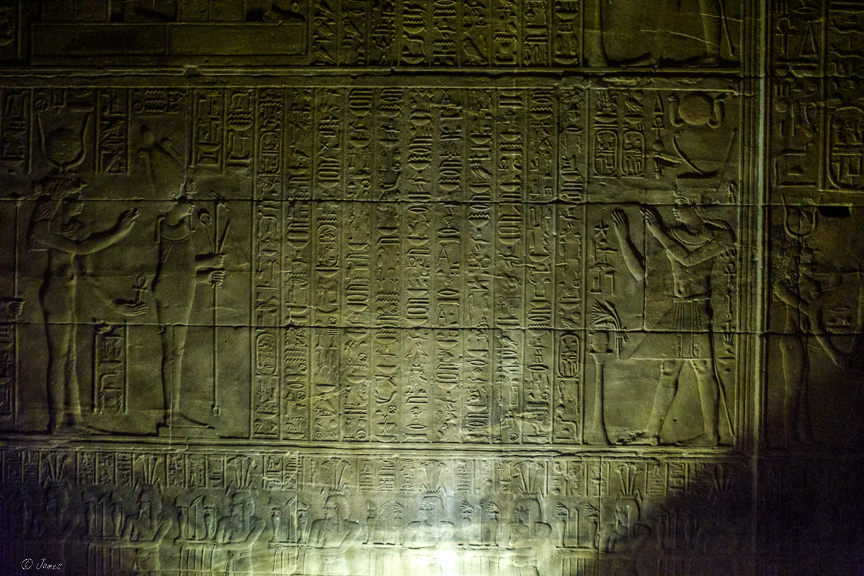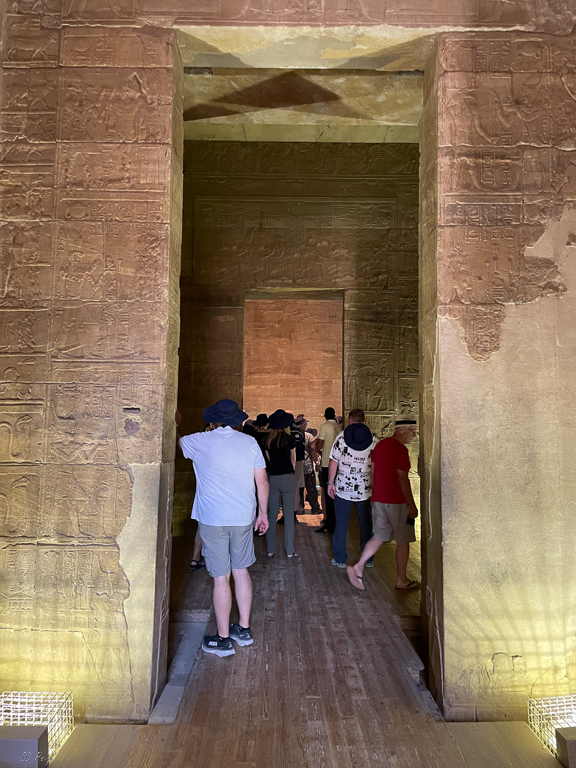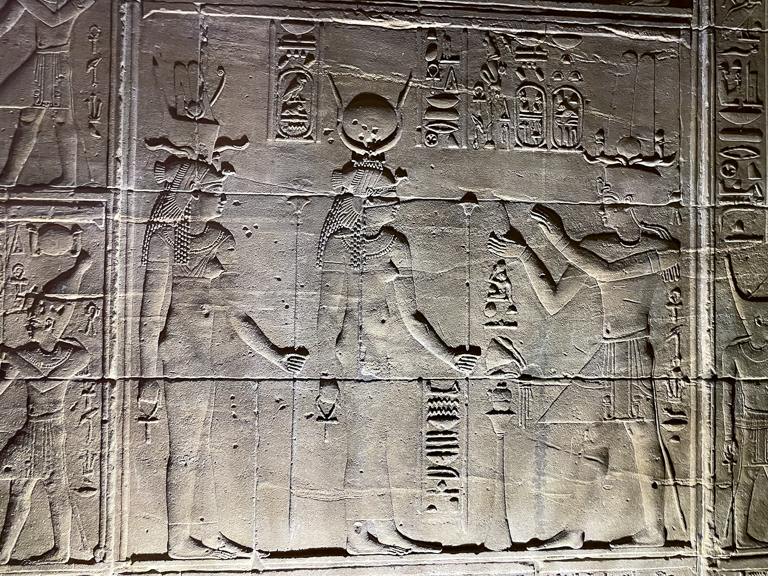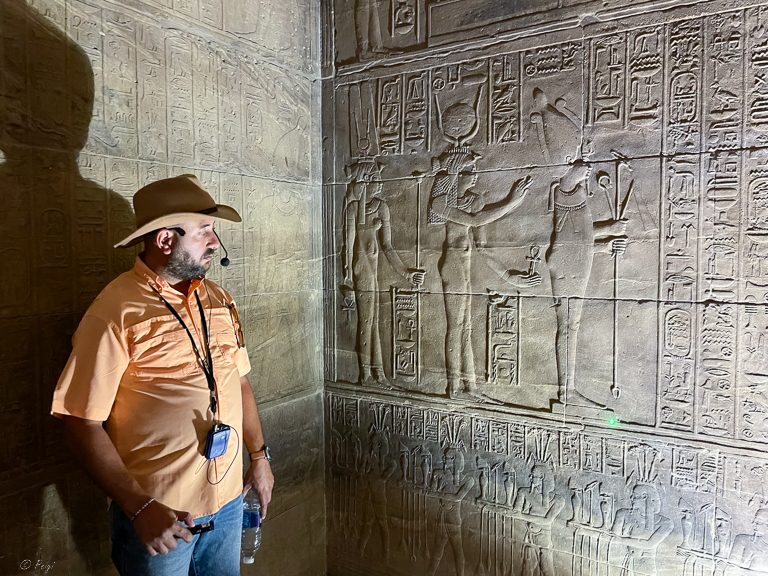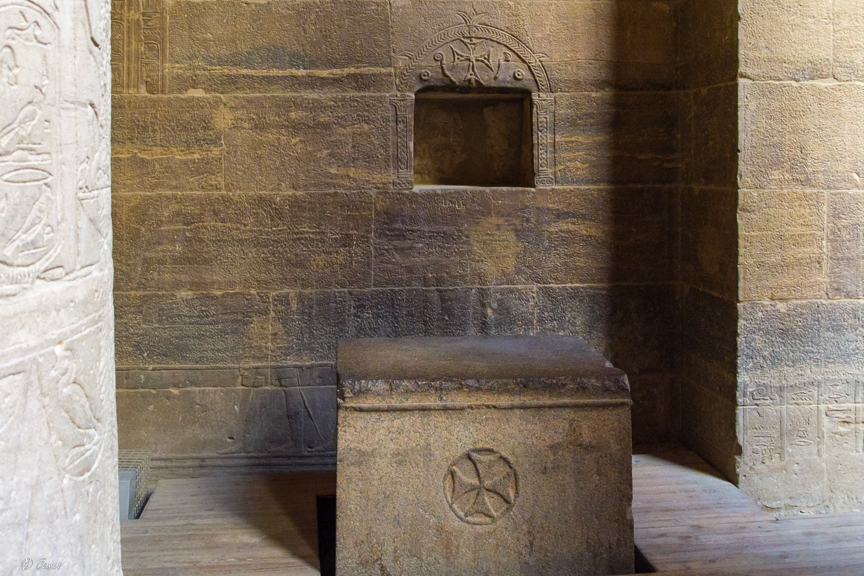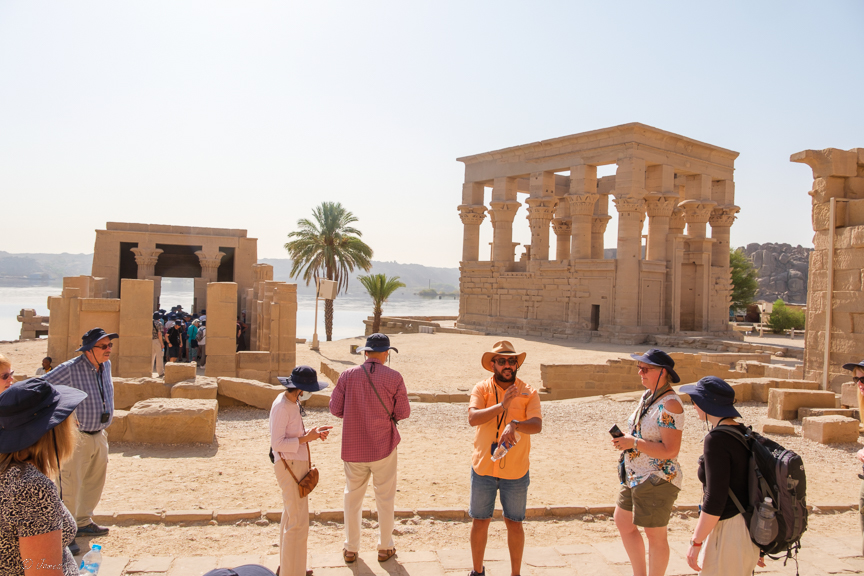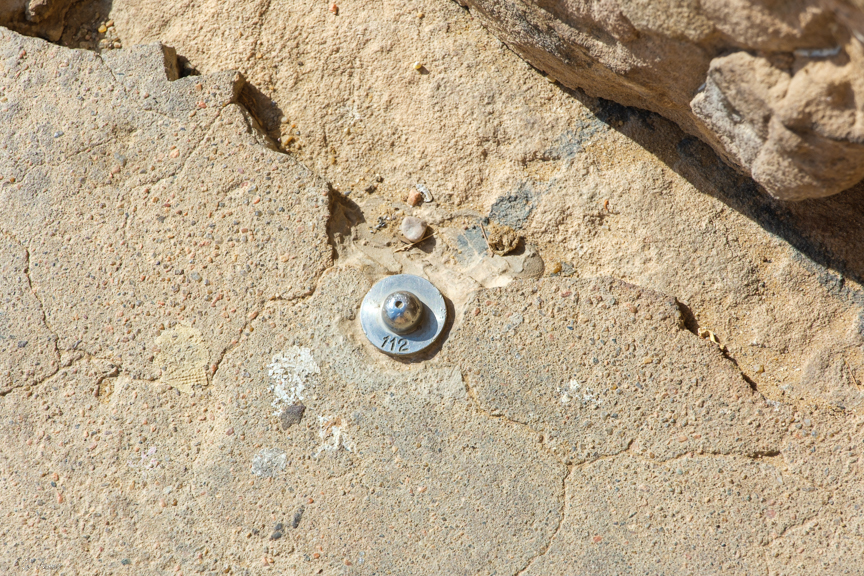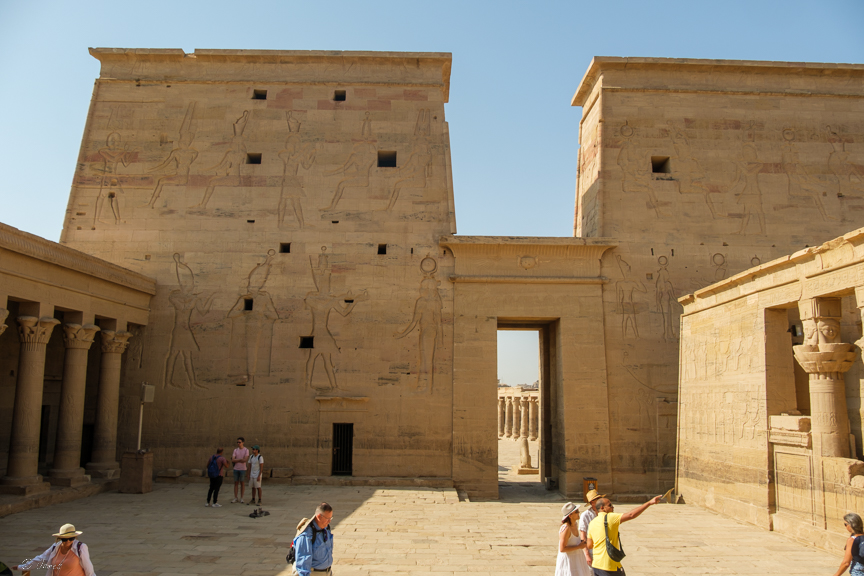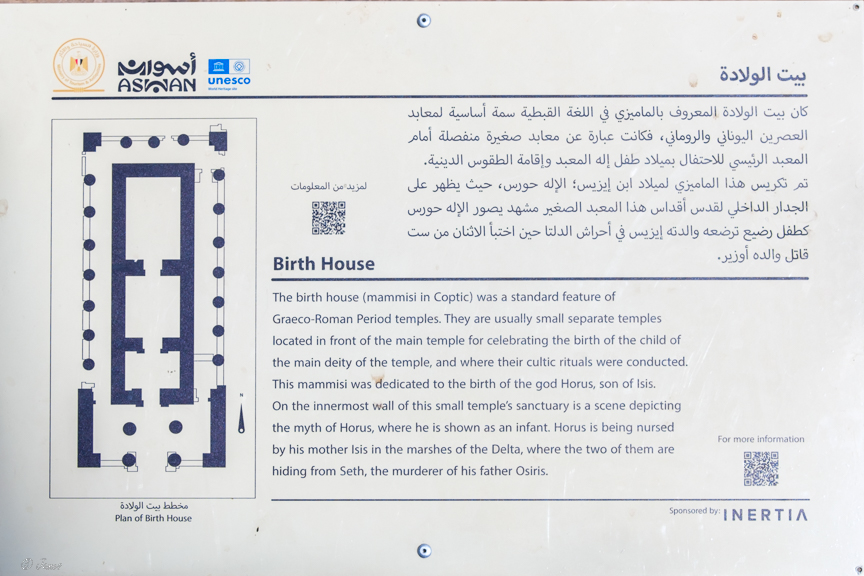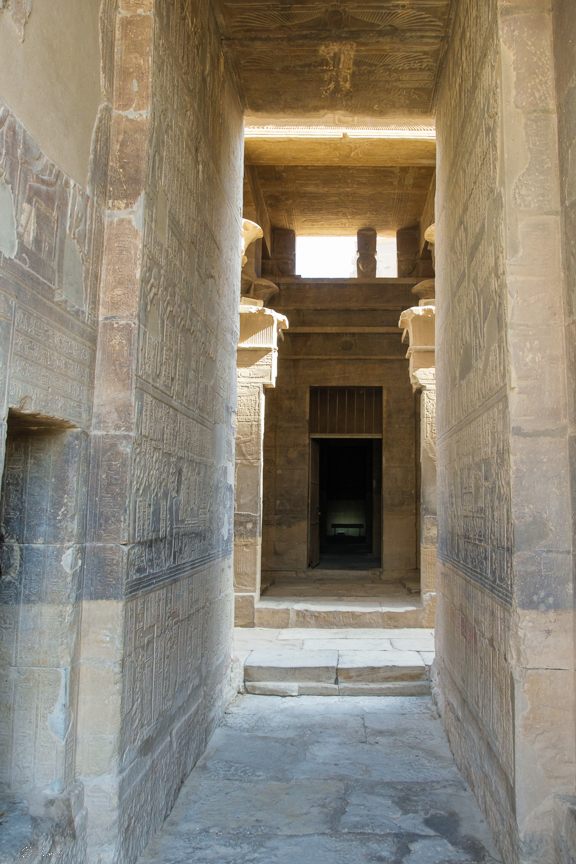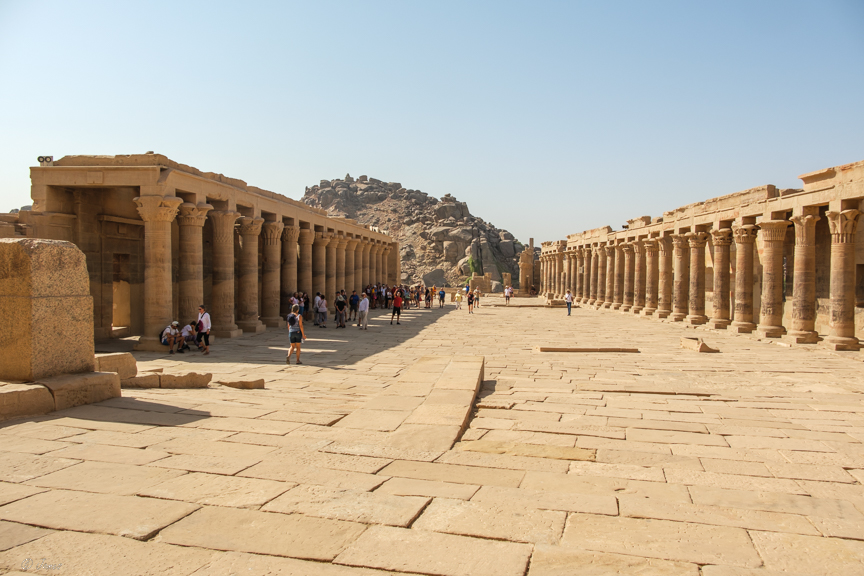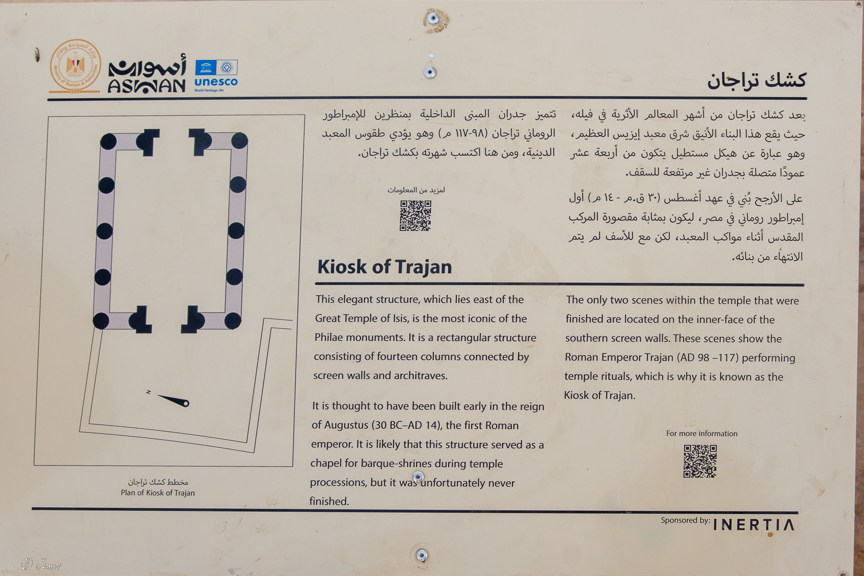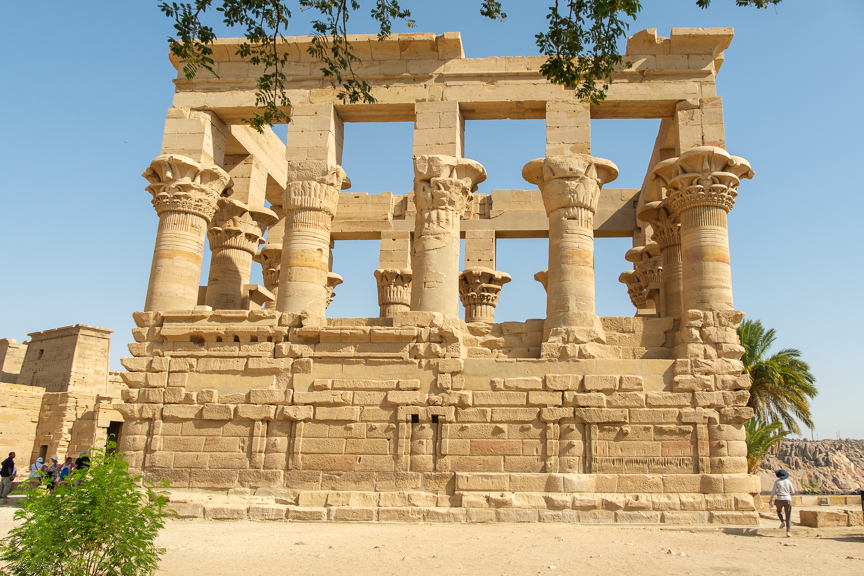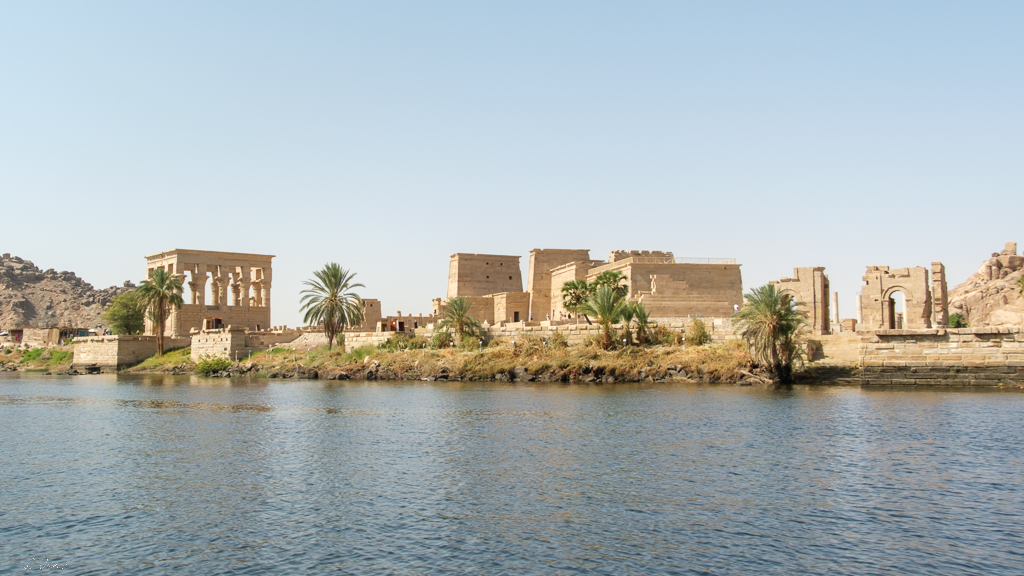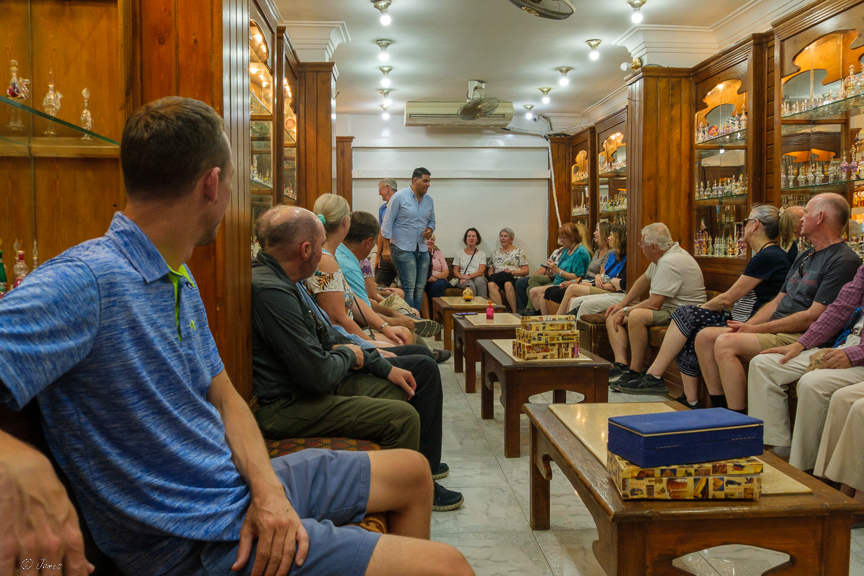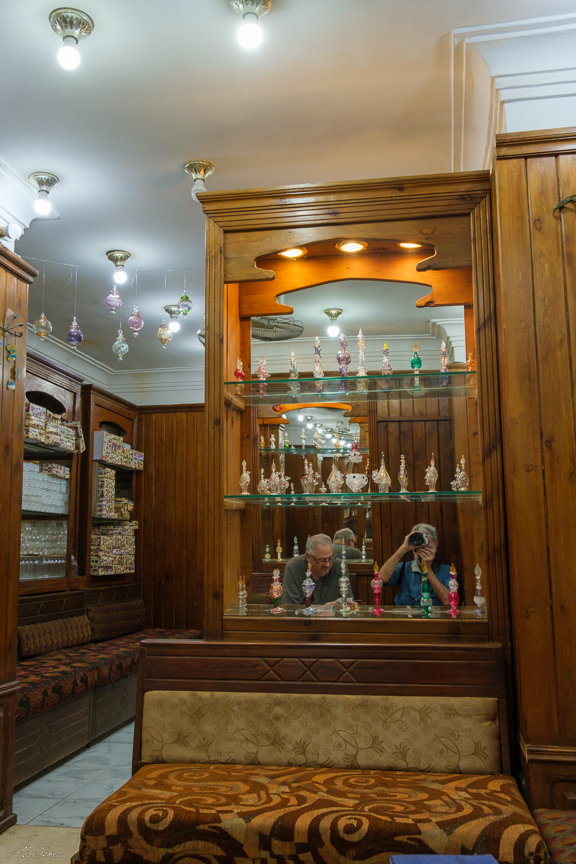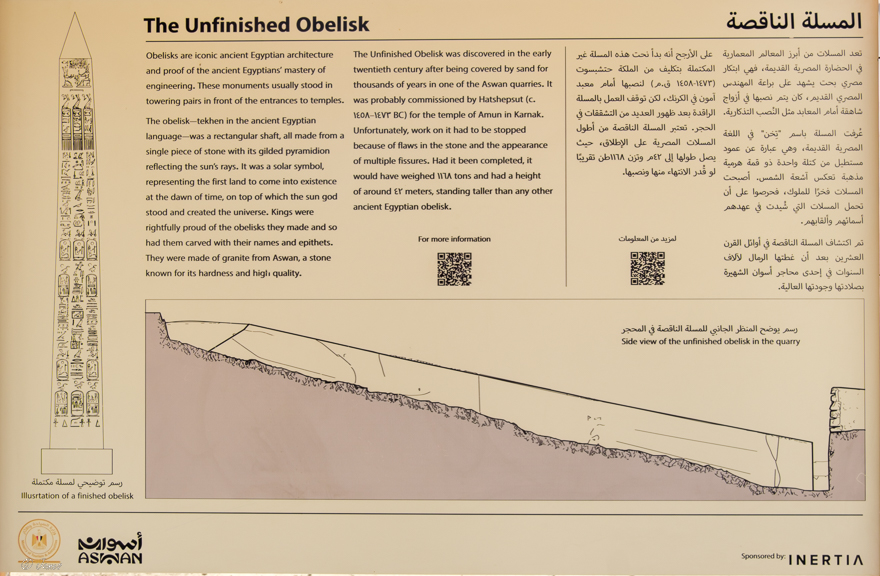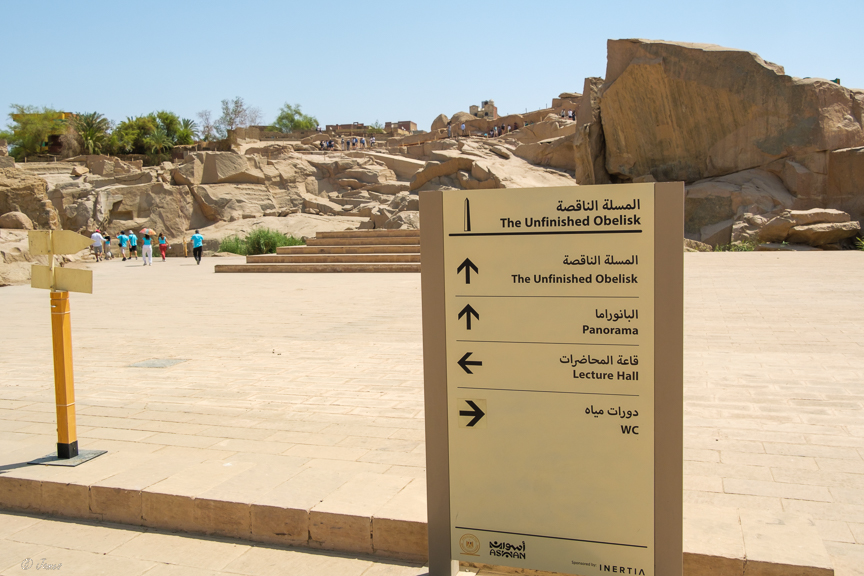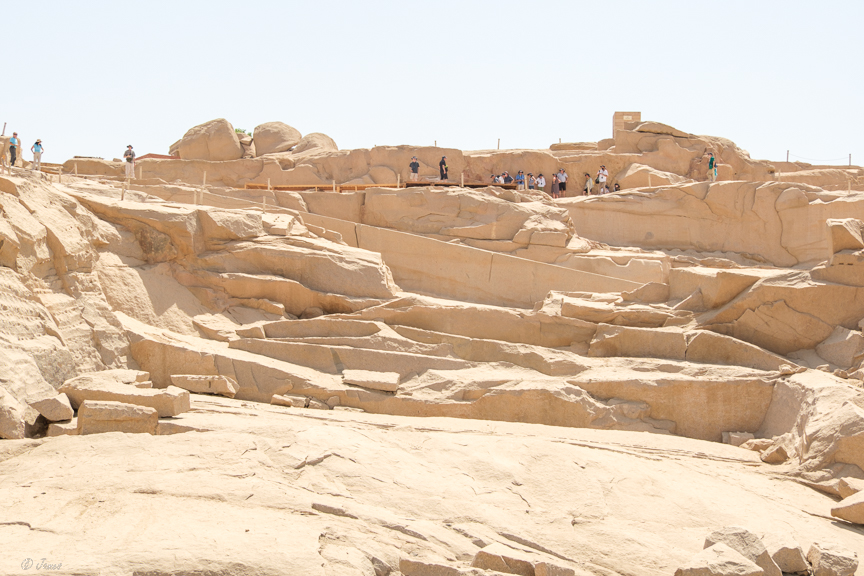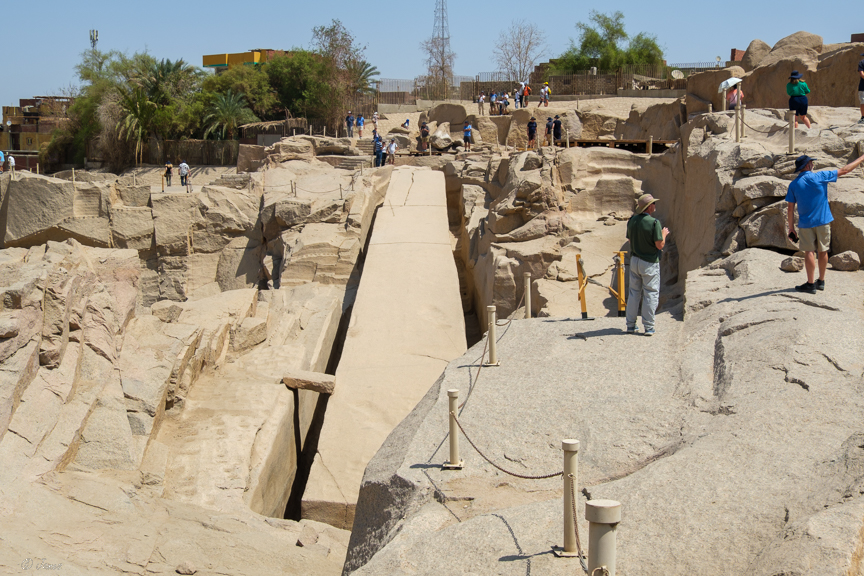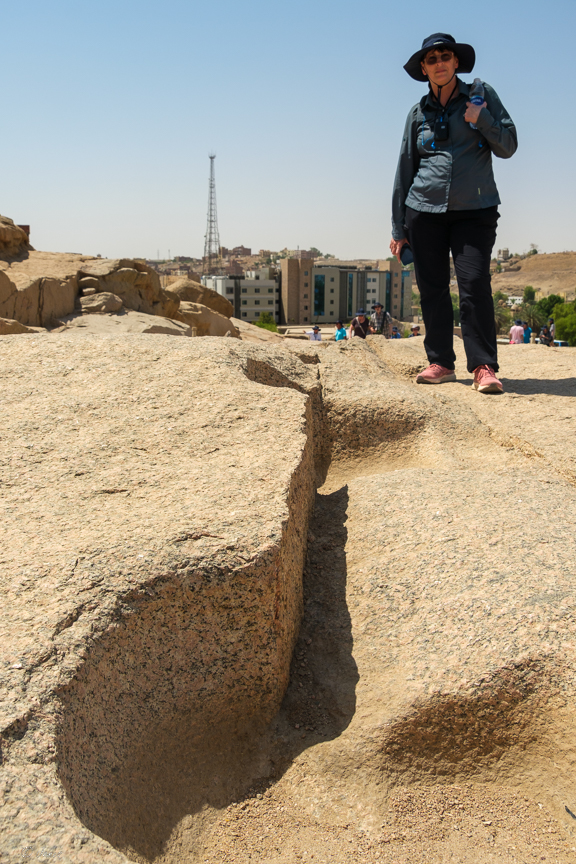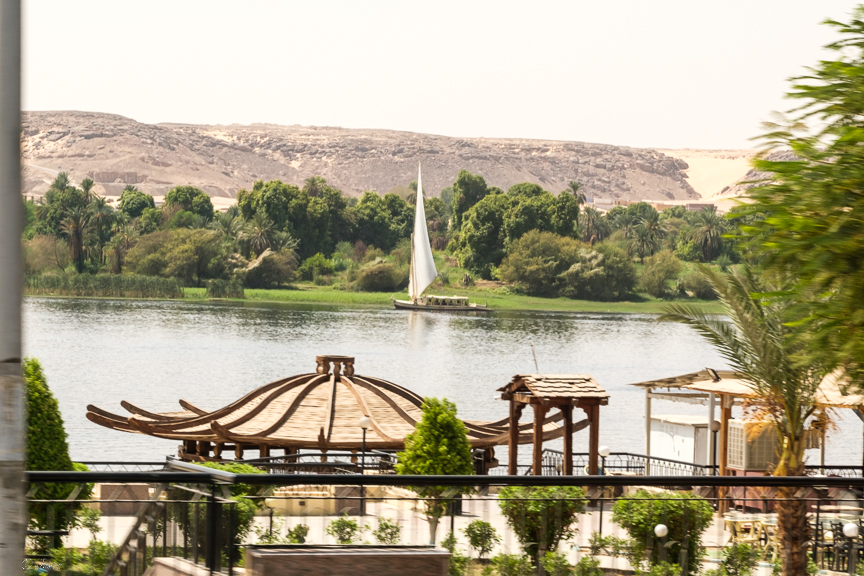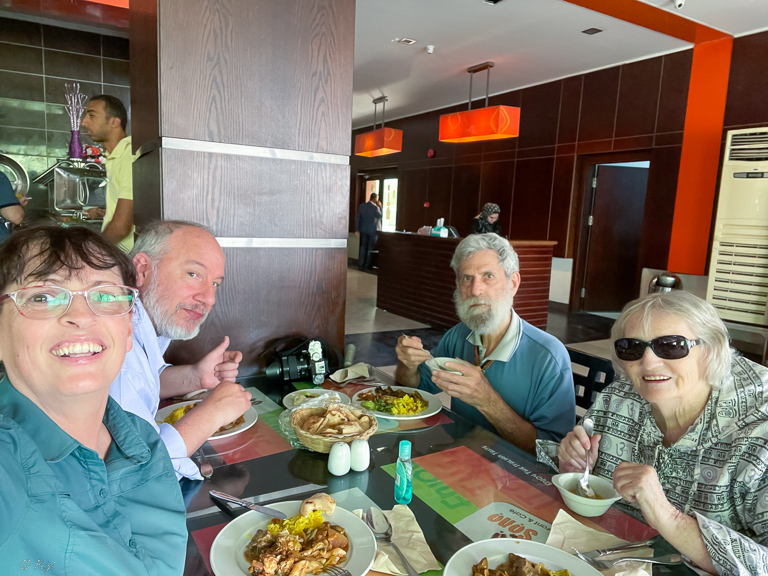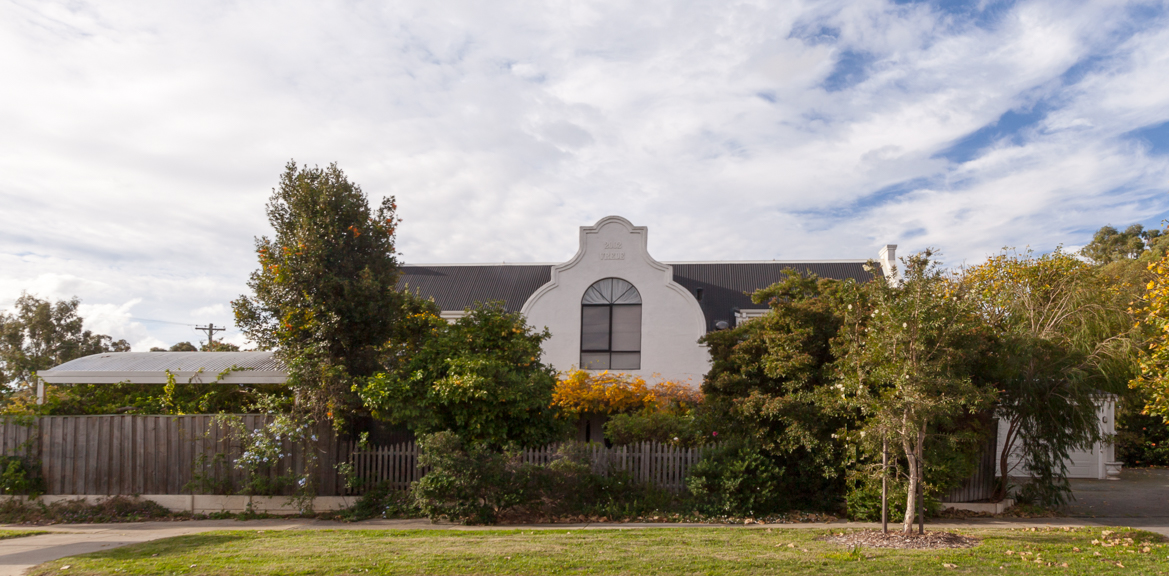We packed our bags as this was our last breakfast on the ship before flying back to Cairo. The heat was intense even this early morning, but the light is extraordinary despite the dry dusty air. Most of Aswan city is on the west bank of the old Aswan dam, offering an interesting view of the east bank from the bus as we drove to the boat ramp. Passing through the usual hawkers, we boarded a small boat (of poor safety compliance!) to sail to the Isle of Philae created by the dam.
A very dark Nubian man in a white ‘dress’ wearing many necklaces also came onboard selling his wares –privileged? Prince assured us his prices were reasonable, true as we discovered. As we looked through the mass of polished coloured stones and brass, I was attracted by a large red stone in a brass frame hung on several strings of smaller stones and beads, an obvious gift for Karen.
Philae Temple has an interesting history. Although the Isis religion on Philae dates back to at least the 7th century BC, the earliest building on Philae was a small temple dedicated to Isis built by Egypt’s last local ruler, Nectanebo I (Napktnebef Kheperkare 380–362 BC). It was later enlarged into a great Temple of Isis by a series of Egyptian rulers, including Ptolemy II Philadelphius (285-246 BC) and the Roman Emperor Diocletian (284-305 AD). By Roman times, Isis had risen to become the most powerful of all Egyptian goddesses, worshipped across the Roman Empire and even as far as Britain.
After Rome annexed Egypt, Philae remained one of the last bastions for Egyptian religion. Its great temple survived for two centuries following the Roman Empire’s conversion to Christianity. During this time, Philae attracted large numbers of Greek and Roman pilgrims, who journeyed to the island seeking healing through prayer from Isis, the mystical Egyptian goddess. Even following their defeat in 451 AD by Emperor Marcian, Nubian priests were allowed to continue making offerings to Isis at her temple on Philae.
In 535 AD the Roman Emperor Justinian ordered Philae’s temples closed. Some of Philae’s sacred chambers were converted for Christian worship and a Coptic community occupied the island converting the hypostyle hall of the main temple into a chapel and destroying the pagan reliefs, whose inscriptions were later defiled by early Muslims.
During the 18th and 19th centuries, Philae’s beauty achieved widespread renown and the island emerged as a popular destination for wealthy European tourists. However, the construction of the Aswan Dam submerged the island for most of the year and Philae’s ethereal charm ebbed away. Today, the grey discolouration of the lower layer of temple stonework is evidence of the effect of their annual immersion.
When the Aswan High Dam project threatened to inundate Philae entirely, the complex of temples was saved by a massive international cultural heritage rescue sponsored by UNESCO. The operation effort lasted from 1972 to 1980. Little Philae was surrounded by a massive coffer dam, and the water drained while a new site was prepared on the neighbouring island of Agilka. The temples were dismantled and each block carefully numbered, before being re-assembled 20m higher in a similar orientation on Agilka since renamed Philae. The ruins of a Temple of Augustus, a Coptic monastery, two Coptic churches and a large Roman city gate were left behind on the submerged island.
Philae’s Temple of Isis is the most imposing building, built by Ptolemy II Nectanebo I around 370 BC. Here the ancient Egyptians venerated Isis together with Osiris and Isis’ son Horus. The most striking features of the Temple are the:
· Gate of Ptolemy II: Dual lions carved from pink granite guard the initial pylon. Once a duo of obelisks carved from exquisite pink granite connected the lions. Hieroglyphs discovered incised into the obelisks’ base were used in conjunction with the Rosetta stone, and proved instrumental in the effort to decipher the Egyptian
· First Pylon: On the first pylon’s east tower Dionysus is shown raising his club whilst holding Egypt’s enemies by their hair. Other figures depicted include Isis, Horus and Hathor. Two smaller images depict the pharaoh presenting Horus and Nephths with his crown and presenting incense to Isis and her child Horus.
· Birth House: A characteristic structure in Ptolemaic temples, the Temple of Isis’ Birth House shows Horus standing amongst papyrus in his hawk form wearing Egypt’s double crown. A relief of Isis being protected by Amun–Ra, Thoth, Wadjet, and Nekhbet as she carries her newborn son Horus in her arms is also inscribed within. The king staged rituals in the Birth House to demonstrate his royal connection to Horus.
· Second Pylon: A scene of Ptolemy XII presenting sacrifices of incense and animals to Horus, Hathor and other gods is incised on the Western Tower. The king is also shown offering blooms to Nephthys and her son Horus, while in another image the king presents incense and pours water on an altar in the company of Isis, Osiris and Horus. A carved granite stele featuring an image of Ptolemy VI Philometor with Isis, Horus and Cleopatra II forms part of the Eastern Tower. The inscription contains the grant of the Dodekaschoinoi, claiming the land as the temple site.
· Inner Courtyard: A majestic Hypostyle hall is accessed via a gate from the second pylon. Ten tall standing columns dominate the hall, each painted to resemble plants and flowers. The courtyard floor symbolized the primeval mound of ancient Egyptian folklore and the ceiling the sky, together with scenes featuring the Madjet or Day Boat and Semektet or Night Boat.
· Sanctuary: Access to Isis’ Sanctuary is via an inner courtyard. The sanctuary itself is a relatively compact room with two windows. A sole pedestal bearing the image of Isis in her sacred boat erected by Ptolemy III Euergetes I, still remains in place today.
Philae’s most elegant structure is roofless Trajan’s Kiosk, thought to have been roofed to shelter Isis’ boat. While Trajan was a Roman Emperor, the kiosk dates back to an earlier time period. It features extensive reliefs of Trajan offering wine to Isis and Horus and burning incense in honour of Isis and Osiris.
Constructed by Ptolemy VI Philometor and Ptolemy VIII Euergetes II, Philae’s Temple of Hathor comprises a forecourt and a colonnaded hall. Augustus adorned the hall with images of sacred festivals to honour Hathor and Isis. Augustus is shown offering gifts to Nephthys and Isis. Here, the ancient Egyptians feasted and danced to ethereal tunes performed by Bes Egypt’s dwarf god of music, humour and dance on his divine tambourine and harp.
Nectanebo’s Kiosk is a pillared, roofless hall that originally featured 14 columns. Only six remain. The vestibule walls are covered with decorative reliefs showing the king sacrificing to the gods. Hathor columns topped with uraei or serpentine carvings connect the Kiosk’s screen walls.
The boat dropped us off at the foot of the Kiosk of Nectanebo, the oldest section of the Philae complex. Walking north, we passed into the outer temple court of colonnades on both sides; the western one being the more complete, with windows that formerly overlooked the island of Biga. The capitals are different on each, as is usual on Greek and Roman pillars, unlike the Egyptian.
The 18m-high pylons tower up at the end, displaying huge reliefs of Ptolemy XII Neos Dionysos smiting adversaries. The Birth House (mammisi) dedicated to Horus, son of Isis and Osiris, is in the central court behind the west pylon. Successive pharaohs re-established their legitimacy as Horus’ mortal offspring by participating in ceremonies commemorating Isis’ mythology and the birth of her son Horus in the marshes.
The east pylon leads to a hypostyle hall with magnificent column capitals, and beyond that are three vestibules leading into Isis’ Inner Sanctuary.
Two granite shrines once stood here, one containing a gold statue of Isis and the barque in which the statue travelled, but those have long since been moved to Florence and Paris, and only the stone pedestal for the barque remains, inscribed with the names of Ptolemy III (246-221 BC) and his wife Berenice.
On the western side, a (closed) stairway goes up to the Osiris Chapel, which was adorned with depictions of the gods bewailing the slain Osiris, as well as clear pictures of the Isis Legend and Horus’ conception.
The Temple of Augustus and the Gate of Diocletian are located on the northern extremity of the island. East of the second pylon is the lovely Temple of Hathor, painted with reliefs of musicians (including an ape playing the lute) and Bes, the deity of childbirth.
South of this is the Kiosk of Trajan, the exquisite, incomplete pavilion on the water’s edge that is possibly the most renowned of Philae’s monuments often portrayed by Victorian painters. It was a clear winner for me too.
The essential oils factory was interesting and the display very attractive. They explained the process to capture the plant’s scent and flavour, or “essence” by extracting compounds from plants through distillation (via steam and/or water or mechanical methods, such as cold pressing, and provided samples to smell. Unique aromatic compounds give each essential oil its characteristic essence. Once the aromatic chemicals have been extracted, they are combined with a carrier oil to create a product that’s ready for use. The way the oils are made is important, as essential oils obtained through chemical processes are not considered true essential oils.
Hatshepsut’s unfinished Obelisk is still in place in the granite quarry, showing some of the methods used to cut this hard rock. Holes were ground along the edges, filled with wood and water added to expand the space to split the rock. Granite was transported from quarries here to build many monuments of all over Egypt including to Khufu’s pyramid at Giza. This unfinished obelisk is 42 m long and weighs about 1000 tons. It’s believed to have been requested by Hatshepsut but was not finished due to cracks. It’s larger than any obelisk anywhere else. Some quarries are submerged by the high dam. We were running late so didn’t stay here long in the intensive heat, going for lunch, and then to the airport.
